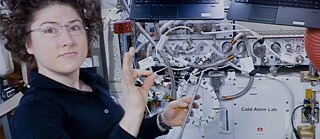Andy Warhol’s “Screen Tests”
Moving Images that Practice Standing Still
Staying still for three minutes is difficult. But that was exactly what the American artist Andy Warhol demanded of his performers in his series Screen Tests. Author Saskia Trebing discusses the exciting project, where standstill and moving images meet.
A Penchant for Stillness
Hardly anyone knew how to use the dynamic between artist and model as effectively as pop art legend Andy Warhol (1928–1987). Even if today the foreman of the New York art commune The Factory is primarily associated with his glamourous surroundings and a short-winded consumer world of “15 minutes of fame,” Warhol certainly possessed a fondness for stillness and introspection. And quite obviously, an impressive amount of patience.
In his Screen Tests series, the artist brought hundreds of more or less prominent personalities from the cultural scene in front of his camera between 1963 and 1966, including the musician John Cale, the painter Salvador Dalí, the artists Niki de Saint Phalle and Yoko Ono, and the singer and style icon Nico. And that is enough to describe the project. Because what is otherwise only the prelude to the actual recordings — lighting, camera settings, checking the telegenic charisma of the actors — is the actual work here. The black-and-white Screen Test short films concentrate entirely on the faces of their protagonists who move only minimally, if at all. The artist wanted no sounds, no action — just maximum deceleration.
"A medium of restlessness trying its hand at stillness"
Intimate, Exceptional Works
How powerful and emotional a duel of gazes can be — with or without a screen — is demonstrated time and again in art. Marina Abramović, for example, proved this in 2010 with her endurance performance The Artist is Present. For three months, the artist sat silently opposite visitors to the MoMA in New York — and moved many of them to tears, simply by looking back. Marina Abramović, “The Artist is Present,” 2010, Museum of Modern Art, New York, March 9–May 31, 2010
| Andrew Russeth, CC BY-SA 2.0, via Wikimedia Commons
Some of the participants in the Screen Tests also react violently to being observed by the camera. Staying still is particularly difficult when being watched and made vulnerable. Some of those filmed protect themselves by looking away, others accept the challenge and look unwaveringly at the viewers for three minutes. In today’s media world, which is often based on quick cuts and consumable morsels, the Screen Tests are a somewhat anachronistic exercise in patience. One that is worthwhile, however, because the films are intimate, exceptional works in Warhol’s career, which has so often been defined by his fascination with the superficial. Artists, models, and audiences meet here in such a human way that, at some point, everyone lays down their weapons.
Marina Abramović, “The Artist is Present,” 2010, Museum of Modern Art, New York, March 9–May 31, 2010
| Andrew Russeth, CC BY-SA 2.0, via Wikimedia Commons
Some of the participants in the Screen Tests also react violently to being observed by the camera. Staying still is particularly difficult when being watched and made vulnerable. Some of those filmed protect themselves by looking away, others accept the challenge and look unwaveringly at the viewers for three minutes. In today’s media world, which is often based on quick cuts and consumable morsels, the Screen Tests are a somewhat anachronistic exercise in patience. One that is worthwhile, however, because the films are intimate, exceptional works in Warhol’s career, which has so often been defined by his fascination with the superficial. Artists, models, and audiences meet here in such a human way that, at some point, everyone lays down their weapons.

![Andy Warhol, “Screen Test: Bob Dylan [ST83],” 1966 Andy Warhol, “Screen Test: Bob Dylan [ST83],” 1966](/resources/files/jpg1143/bob-dylan-st-83-1966-cawm_23_1ss-formatkey-jpg-w320r.jpg)
![Andy Warhol, “Screen Test [ST269]: Lou Reed (Coke),” 1966](/resources/files/jpg1143/lou-reed-coke-st269-1966-cawm-formatkey-jpg-default.jpg)
![Andy Warhol, “Screen Test [St237]: Nico,” 1966](/resources/files/jpg1143/nico-st-237-1966-cawm-formatkey-jpg-default.jpg)
![Andy Warhol, “Screen Test [ST147]: Jane Holzer (Toothbrush),” 1964](/resources/files/jpg1143/jane-holzer-st147-1964-cawm-formatkey-jpg-default.jpg)
![Andy Warhol, “Screen Test [ST83]: Bob Dylan,” 1966](/resources/files/jpg1143/bob-dylan-st-83-1966-cawm-v1-formatkey-jpg-default.jpg)



